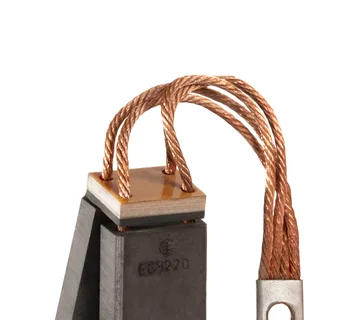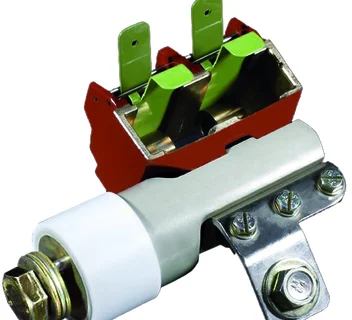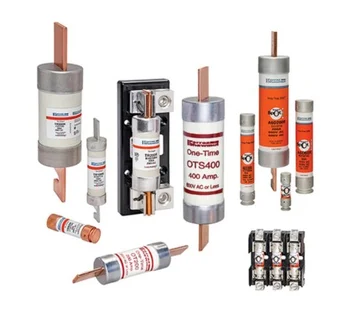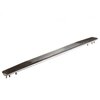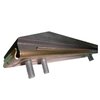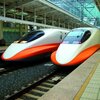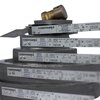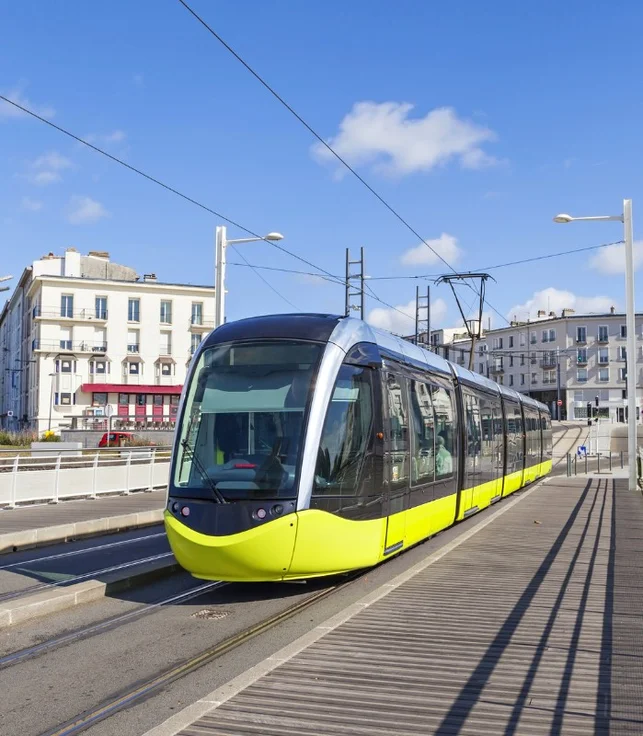
Optimizing railways with Mersen
In the ever-evolving landscape of rail transport, the advent of carbon technology marked a significant leap forward.
Mersen, with its cutting-edge carbon brush solutions, is at the heart of this transformation, driving the railways and metros sectors towards a more efficient and sustainable future.
-
Mersen is a promoter of innovation
With a global presence in the railways and metros market, Mersen has successfully established itself through its innovative prowess, including the field of carbon.-
21.00
R&D centers for a continuous innovation
-
33.00 countries
Mersen presence
-
130.00 years
of expertise in railways
-
2.00
worldwide ranking in industrial fuses
-
-
Carbon brushes and brush-holders for keeping trains on track
In the intricate ecosystem of railways and metros, the roles of brush-holders and carbon brushes are fundamental yet often understated. These components are essential for the smooth functioning of trains, primarily in power transmission and electrical operations. Brush-holders are designed to securely hold carbon brushes, ensuring consistent contact with the commutator or slip ring, crucial for the effective transfer of electrical current. Carbon brushes, made from high-quality carbon, are tailored to withstand the demanding conditions of railway systems, offering excellent electrical conductivity and durability. Their low maintenance and long lifespan are significant advantages to ensure the safety, efficiency, and reliability of modern train systems.
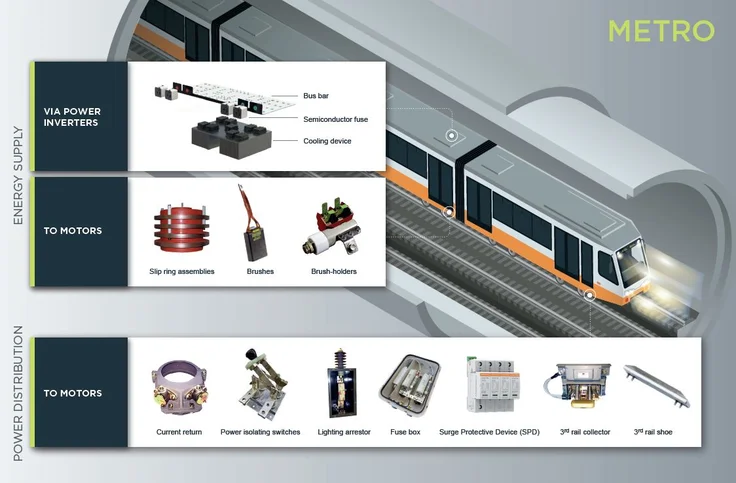
-
The remarkable efficiency of carbon brushes
I've witnessed the remarkable efficiency of Mersen's carbon brushes in our trains.
Their exceptional electrical conductivity and robustness have dramatically lowered our maintenance needs, boosting our overall performance.
Léa Master
Head of Fleet Operations
-
What is a brush-holder?
A brush-holder is a critical component in electrical machines, particularly in railways. It's designed to securely hold the carbon brush, ensuring a stable and consistent electrical connection between the moving and stationary parts of the motor. In railway applications, brush-holders play a vital role in maintaining the efficiency and reliability of the electrical systems, especially in the demanding environments of traction motors.
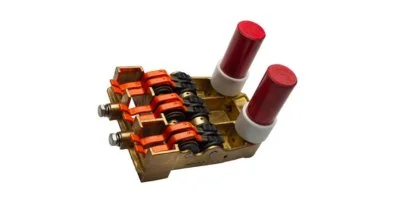
-
Mersen range of current collector devices
Mersen offers a specialized range of products for the railways and metros sectors. Our solutions are engineered for optimal electrical transfer, safety, and durability in rail applications.
Brush-holders and carbon brushes
Mersen's brush-holders and carbon brushes are engineered for optimal performance in railway applications. The brush-holders are designed for durability and precise brush alignment, ensuring maximum contact and minimal wear. The carbon brushes, made from high-grade materials, provide excellent conductivity and longevity, essential for the smooth operation of railway motors.
Current Collector Device shoes (CCD Shoes)
The Current Collector Device shoe, or CCD shoe, is a specialized system used in railways for transferring electrical power from the track to the train. Mersen's CCD Shoes are known for their robust construction and efficient power transfer capabilities, making them a reliable choice for modern railway systems.
Current collectors
Mersen's current collectors, or pantograph contact strips, are essential for the overhead power collection in electric railways. They ensure a continuous and stable connection between the train and the overhead lines. Made from advanced materials, they offer high durability and reduced wear, contributing to efficient and uninterrupted power supply.
Solutions of wheel flange lubrication
Mersen's wheel flange lubrication sticks and applicators are tailor-made for reducing wheel wear and enhancing the efficiency of railway vehicles. These innovative solutions are crucial for maintaining optimal wheel-rail interaction, significantly extending the lifespan of wheelsets and rails by minimizing friction and wear.
The lubrication sticks, formulated with advanced materials, provide consistent and controlled release of lubricant, ensuring effective lubrication even under the most challenging conditions. Paired with precision-engineered applicators, these systems deliver lubricant directly to the wheel flange, optimizing performance and reducing maintenance needs.
Busbars for railways
Busbars in railways are crucial for distributing electrical power throughout the train. Mersen's busbars for railways are designed for high conductivity and resistance to vibration and thermal expansion, ensuring reliable power distribution under various operating conditions.
Railways fuses
Railway fuses are a key safety component in the electrical systems of trains. Mersen's railway fuses are designed to protect against overcurrents and short circuits, ensuring the safety of both the electrical systems and the passengers. Their fuses are known for their fast-acting characteristics and reliability in demanding railway environments.
-
How to choose your railway fuses?
-
Determine the application
Identifying the specific application within the railway system is the first step in selecting the appropriate railway fuse. Different applications, such as traction motor protection, signaling systems, or onboard electronics, have distinct electrical requirements. The chosen fuse must be compatible with the electrical demands and operational conditions of its intended application.
-
Considering voltage rating
Voltage rating of railway fuse should be equal to or exceed the maximum voltage present in the circuit it is intended to protect. In railway systems, voltage requirements can vary, especially between high-voltage lines and lower voltage onboard systems. Ensuring the correct voltage rating is essential for effective protection.
-
Measuring current rating
Selecting a fuse with the appropriate current rating is vital. This rating should slightly exceed the normal operating current of the circuit to avoid nuisance tripping, yet be low enough to safeguard against overcurrent situations. The current rating ensures the railway fuse will operate correctly under normal conditions and respond effectively during faults.
-
Taking breaking capacity into account
The breaking capacity indicates the maximum current that the fuse can safely interrupt. In the high-power environment of railways, a railway fuse with a sufficient breaking capacity is essential to prevent equipment damage and ensure safety during overcurrent events.
-
Physical size and form factor of railway fuses
The physical dimensions and form factor of the railway fuse must be compatible with the space available in the railway system's electrical panels or fuse boxes. The size and shape of the fuse are important for ensuring it fits properly and functions as intended.
-
Considering environmental factors
Railway fuses must be able to withstand the specific environmental conditions they will be exposed to, such as temperature variations, humidity, and vibration. Selecting railway fuses that are robust and reliable under these conditions is crucial for long-term performance and safety in railway applications.
-
-
For what types of railways are Mersen's equipment suitable?
Mersen's railway equipment is designed to cater to a diverse range of railway systems, from high-speed trains to urban transit systems. Each type of railway has unique requirements, and Mersen' solutions are tailored to meet these specific needs.
Railways fuses for High-Speed Trains
High-speed trains require railway fuses that can handle the intense electrical demands and high-speed operations. Mersen's railway fuses for high-speed trains are designed to provide reliable protection against overcurrent and short circuits, ensuring the safety and efficiency of these fast-moving trains. They are built to withstand the high voltages and currents typical in high-speed rail applications.
Pantograph contact strips for Intercity and Regional Trains
Intercity and regional trains need reliable contact strips for efficient power transfer. Mersen's pantograph contact strips are designed to ensure consistent electrical conductivity and durability, essential for the smooth operation of these trains over varying distances. Pantograph contact strips are tailored to handle the varying speeds and electrical loads typical of intercity and regional rail services.
Carbon brushes for Urban Transit Systems
Urban transit systems, such as metros and trams, need durable and efficient carbon brushes for their electric motors. Mersen's carbon brushes are engineered to deliver optimal electrical conductivity and minimal wear, ensuring smooth operation and longevity in the demanding urban transit environment. Carbon brushes are designed to perform consistently in frequent start-stop conditions typical of urban transit systems.
Brush-holders for freight Trains
Freight trains, which often carry heavy loads over long distances, require robust brush-holders that can endure the rigors of heavy-duty use. Mersen's brush-holders for freight trains are built to provide stable and secure housing for carbon brushes, ensuring reliable electrical contact and minimal downtime. Their durability is key in the harsh conditions often encountered in freight rail operations.
Pantograph contact strips for mountain Railways
With altitude and snow, mountain railways operate in challenging environments and require pantograph contact strips (current collectors) that can withstand extreme conditions. Mersen's pantograph contact strips for mountain railways are designed to maintain consistent contact with overhead lines, even in the face of steep inclines, sharp turns, and varying weather conditions.
-
For what purposes should a Mersen carbon brush be used?
Mersen's carbon brushes are versatile components in the railway industry, serving various critical functions.
A carbon brush for traction motor
For traction motors, Mersen's carbon brushes, along with their corresponding brush-holders, are vital. These brush-holders ensure that the brushes maintain optimal contact with the commutator, enabling smooth and efficient operation of the motors that drive the train's wheels. This setup is designed to withstand high currents and the frequent start-stop cycles typical in railway applications.
A carbon brush in Earth Return Current Units
In earth return current units, carbon brushes are used to facilitate the safe and efficient return of electrical current to the ground. Mersen's brushes in these units are designed to ensure a low-resistance path for the current, helping to prevent electrical hazards and maintain the integrity of the railway's electrical system.
-
Mersen provides key products to optimize the performance of all types of rolling stock
-
What are the benefits of carbon for pantograph contact strips and carbon brushes?
-
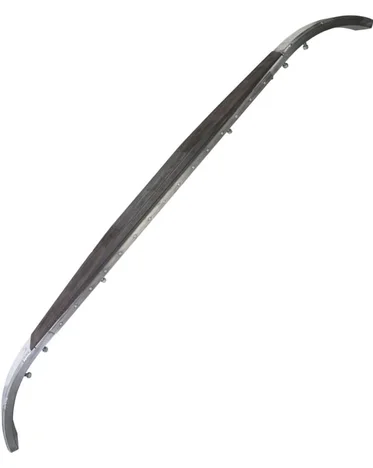
Excellent Electrical Conductivity
carbon strips and carbon brushes
Carbon's excellent electrical conductivity is a key advantage for contact strips and carbon brushes. This property ensures effective and efficient transmission of current in current collection, which is essential for the operation of electrical components in railways.
-
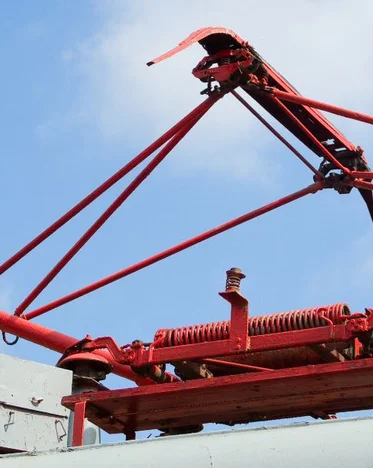
Low Friction
carbon strips and carbon brushes
The low friction characteristic of carbon is particularly beneficial for traction motor brushes and contact strips. Carbon reduces wear and tear on both the brushes themselves and the components they interact with, like commutators or slip rings. The result is a longer lifespan for these components and less frequent need for replacements or maintenance.
-
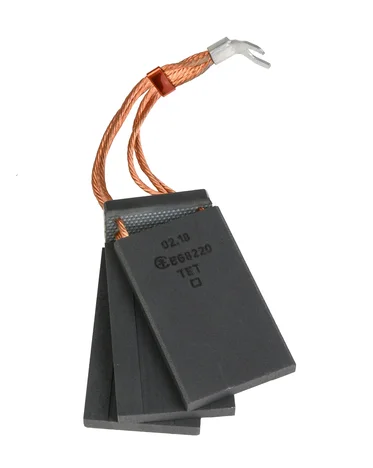
Self-Lubricating
carbon strips and carbon brushes
Carbon brushes and strips often exhibit self-lubricating properties, which is a significant advantage in railway applications. This feature reduces the need for external lubrication, simplifying maintenance routines.
-
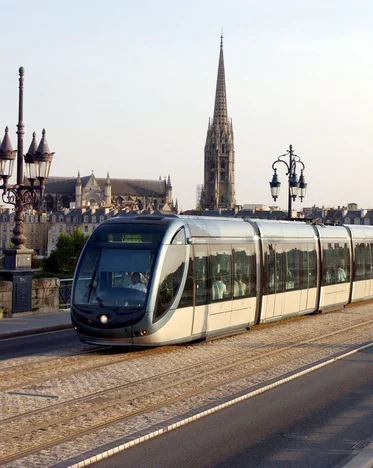
Minimal Noise
carbon strips and carbon brushes
The use of carbon in carbon brushes and pantograph strips (current collectors) contributes to quieter operation. This is particularly advantageous in urban transit systems, where reducing noise pollution is a priority. The minimal noise production enhances passenger comfort and complies with stringent noise regulations in populated areas.
-

Heat Resistance
carbon strips and carbon brushes
Carbon's ability to withstand high temperatures makes it an ideal material for railway applications, where components are often exposed to heat. This heat resistance ensures that carbon brushes and carbon strips maintain their structural integrity and performance even in challenging thermal environments.
-
-
Why choose Mersen for your brush-holder?
-
Questions on brush-holders and equipment for railways and metros
-
What materials are used in Mersen's brush-holder designs?
Mersen's brush-holders are designed using high-quality materials that ensure durability and optimal performance. These materials include various grades of metals and alloys, chosen for their strength, conductivity, and resistance to wear and environmental factors. The choice of material is tailored to the specific requirements of each application, ensuring the best performance of the brush holders in different railway and metro environments.
-
What are the advantages of wheel flange lubrication in train systems?
Wheel flange lubrication plays a crucial role in train systems by reducing friction between the wheel flange and the rail. This reduction in friction leads to several benefits, including decreased wear and tear on both the wheels and rails, extended lifespan of these components, improved energy efficiency due to less resistance, and a smoother, quieter ride for passengers.
-
Why are earth return current units important for train safety?
Earth return current units are vital for train safety as they ensure the safe and efficient return of electrical current to the power source. This helps in preventing stray currents that can cause rail corrosion, signal interference, and potential safety hazards.
-
How to maintain your railway fuses?
Maintaining railway fuses involves regular inspections to check for any signs of damage or wear. It's important to ensure that fuses are correctly rated for their specific application and are replaced promptly if they show signs of deterioration or after a fault has occurred.
-
Why is it essential to regularly inspect and replace pantograph contact strips in train systems?
Regular inspection and replacement of pantograph contact strips in train systems are essential for maintaining efficient current collection and ensuring the safety of the electrical system. Worn or damaged pantograph contact strips can lead to poor electrical contact, increased wear on the pantograph, and potential damage to overhead lines. Timely replacement ensures consistent electrical performance and reduces the risk of operational disruptions and costly repairs.
-
-
Trains and metros
Need more information on pantograph contact strips?
